More than 65% of global enterprises have already migrated from traditional PSTN lines to SIP-based telephony, according to Gartner’s 2024 Unified Communications Report. That shift marks one of the most significant infrastructure overhauls in modern business communications, replacing copper with code, and physical lines with virtual channels.
For many companies, the term SIP trunking is familiar, yet the real performance driver often goes unnoticed: the SIP trunk channel. Each channel represents a single call path, and understanding how these channels work and how many you need, determines everything from call quality to monthly costs. Misconfiguring them can mean dropped calls, wasted bandwidth, or paying for unused capacity.
In this guide, we’ll break down the structure behind SIP trunk channels, how they function, and how to calculate the right capacity for your organization. You’ll also see how providers like DIDlogic deliver elastic, high-availability channel configurations for businesses scaling across multiple regions.
What Is a SIP Trunk Channel And Why It Matters
A SIP trunk channel is the digital equivalent of a single phone line, it represents one active call path that can carry either an inbound or outbound call. When that call ends, the channel becomes available for the next one. In SIP trunking, these channels travel over the internet rather than through physical copper lines, allowing businesses to make or receive multiple calls simultaneously using virtual connections.
Think of a SIP trunk as a pipe, and the channels as lanes inside that pipe. The more lanes you have, the more concurrent calls your system can handle. A small office might only need a few lanes, while a call center could need hundreds. This flexibility makes SIP trunking fundamentally different from traditional telephony, you can expand or reduce your capacity in seconds instead of waiting for technicians to install new hardware.
A helpful way to picture it: a SIP trunk functions like a multi-lane highway for voice data packets. Each vehicle (call) travels along its own lane (channel). When traffic increases, you simply open more lanes; when it’s quiet, you close a few. That elasticity is what makes SIP trunk channels the true backbone of scalable voice infrastructure.
| Feature | PSTN Lines | SIP Channels |
| Scalability | Fixed number of lines; physical expansion required | Instantly scalable, add or remove channels on demand |
| Cost | High setup and maintenance costs per line | Pay only for the number of concurrent calls you need |
| Setup Time | Days or weeks (requires wiring) | Minutes, configured remotely through a provider |
| Redundancy | Limited; dependent on physical lines | Built-in failover and rerouting options across networks |
In short, SIP trunk channels offer the scalability, flexibility, and resilience that fixed PSTN lines could never match. They turn telephony into a software-driven service, making voice communication as adaptable as cloud computing itself.
How SIP Trunk Channels Actually Work (Step-by-Step)
Every SIP trunk call follows a structured, digital journey, transforming voice into data packets that move seamlessly across networks. Here’s how the process unfolds:
- Caller → IP-PBX → SIP Trunk Provider → Internet → Receiver
When a user dials a number, the call request goes first to the company’s IP-PBX (Private Branch Exchange). The PBX then routes the call through the SIP trunk provider, which connects it to the wider internet and finally delivers it to the recipient’s network or phone system. - SIP Protocol in Action
The Session Initiation Protocol (SIP) acts as the control layer, it sets up, manages, and ends each call session. Once a session is established, a separate stream known as RTP (Real-Time Transport Protocol) carries the actual audio data. - Voice Packetization
Your voice is broken down into small data packets using codecs, most commonly G.711 for uncompressed, high-quality audio or G.729 for compressed, bandwidth-saving transmission. These packets travel through the internet and are reassembled in real time, ensuring natural, uninterrupted conversation. - Reliability Through Routing
DIDlogic optimizes this process through intelligent SIP signaling and media routing. Its network automatically selects the most stable, lowest-latency paths for each call, rerouting in milliseconds if a carrier route underperforms. This built-in resilience minimizes jitter, packet loss, and downtime across global deployments.
Channel Allocation and Management
SIP trunk channels don’t stay permanently open; they activate dynamically with each call. When someone makes or receives a call, the system temporarily occupies one channel. Once the call ends, that channel is freed for the next session.
If all channels are in use, new calls either queue, overflow to another route, or failover to backup trunks, depending on the configuration. Enterprises often prevent call congestion by maintaining 20–30% channel headroom, ensuring they can handle sudden call spikes without service degradation.
DIDlogic’s real-time analytics tools track channel usage, alerting admins when utilization nears capacity. That visibility helps businesses scale proactively rather than reactively, keeping call quality stable even during peak load hours.
SIP Trunking vs SIP Channels: Common Confusion, Clear Difference
The terms SIP trunk and SIP channel are often used interchangeably, but they refer to two different layers of the same system. A SIP trunk is the virtual link that connects your company’s IP-PBX to the public telephone network (PSTN) through the internet. Within that trunk, SIP channels determine how many calls can take place at the same time.
A practical way to understand it: a SIP trunk is like your main water pipe, while channels are the faucets you can open simultaneously. The pipe (trunk) supplies the flow of communication, and each faucet (channel) represents one active conversation. If you open more faucets, you need enough water pressure, or in telephony terms, enough bandwidth and channel capacity, to keep every stream running smoothly.
| Term | Description | Key Function |
| SIP Trunk | Virtual link between your IP-PBX and SIP provider | Connects your internal phone system to the PSTN |
| SIP Channel | Individual call path within the SIP trunk | Enables one concurrent inbound or outbound call |
By separating the two, businesses can plan capacity intelligently, scaling channels as their call volume grows without touching the core SIP trunk connection. That flexibility turns traditional voice infrastructure into a scalable, software-defined system that adapts instantly to changing communication needs.
How to Determine the Right Number of SIP Trunk Channels
Choosing the right number of SIP trunk channels starts with understanding your organization’s call patterns. Too few channels can block incoming calls or frustrate customers; too many can inflate costs unnecessarily. The goal is balance, provisioning enough capacity for peak load without paying for idle bandwidth.
A good baseline is the 3:1 employee-to-channel rule. In most office settings, one channel for every three employees provides sufficient coverage for typical concurrent call volumes. However, the ratio shifts based on the business type and communication intensity:
- Call centers: 1:1 or 2:1 ratio (most employees on calls simultaneously).
- Corporate offices or professional services: 4:1 to 6:1 ratio (fewer concurrent calls, more email or chat use).
- Hybrid or distributed teams: scale dynamically based on live monitoring data.
Example:
A company with 60 employees and moderate daily call flow may require 15–20 channels to maintain seamless inbound and outbound communication. DIDlogic’s usage analytics dashboard tracks call concurrency in real time, allowing administrators to adjust channel counts on demand, no downtime, no waiting for manual provisioning.
Factors That Affect Channel Needs
Several variables shape how many channels a business should maintain:
- Call concurrency: The maximum number of simultaneous calls during peak periods.
- Average call duration: Longer calls mean channels stay occupied longer.
- Peak hours: Afternoon or seasonal spikes can temporarily double traffic.
- International traffic: Routes to certain regions may require additional redundancy or quality buffers.
A simple planning formula helps estimate needs:
Required Channels = (Max Concurrent Calls × Safety Margin)
Most organizations apply a 20–25% safety margin to accommodate unexpected spikes or delayed call terminations.
Under-provisioning leads to busy signals and missed revenue, while over-provisioning wastes budget. The most reliable strategy is to track usage monthly through DIDlogic’s monitoring tools and fine-tune capacity based on actual behavior, not assumptions.
Business Benefits of SIP Channels Done Right
When configured strategically, SIP trunk channels become more than just call paths, they’re an adaptable communication backbone that grows with your business. The value isn’t only in the technology itself, but in how it transforms cost structure, resilience, and collaboration.
- Elastic Scalability
Unlike legacy phone lines, SIP channels expand or contract instantly. Adding a new employee or opening a branch office doesn’t require rewiring, it’s as simple as updating your provider configuration. DIDlogic enables on-demand scaling, letting businesses add temporary capacity during seasonal peaks or major campaigns, then scale back down once traffic stabilizes. - Cost Efficiency
Traditional PSTN systems lock you into fixed monthly fees per line, whether those lines are used or not. SIP channels shift that model entirely, you pay only for active capacity or metered usage. According to Ofcom’s 2024 report, businesses migrating from ISDN to SIP save an average of 35% annually on voice costs. - Resilience and Reliability
Every SIP trunk channel operates within a redundant network framework. If one route fails, calls are automatically rerouted through backup carriers without user intervention. DIDlogic’s adaptive routing technology continuously monitors route quality, ensuring calls stay stable and clear even during partial network outages. - Unified Communications Across Platforms
SIP channels integrate seamlessly with unified communications systems, bringing voice, video, and messaging under one infrastructure. That interoperability eliminates silos between communication tools, making collaboration faster and context-rich. - Support for Hybrid and Remote Teams
Modern teams rarely sit in the same office. SIP trunking extends communication access globally via softphones and cloud PBX integration, allowing remote employees to make and receive calls as if they were on-site. For distributed organizations, this keeps both call quality and brand consistency intact across every customer interaction.
Getting SIP channels right isn’t just about keeping phones ringing, it’s about building a future-proof communication architecture that adapts instantly to change, scales intelligently, and continuously reduces operational costs.
Key Considerations When Choosing SIP Channel Configuration & Provider
Selecting the right SIP trunk provider and channel configuration defines how reliably your business communicates, not just how cheaply. The difference between a strong and weak setup shows up during peak hours, unexpected outages, or rapid growth phases. Each decision point below directly impacts quality, cost, and long-term scalability.
Reliability and Quality of Service (QoS)
A SIP provider should guarantee at least 99.99% uptime through a Service Level Agreement (SLA). That level of reliability ensures your customers never face dropped calls or unavailable lines. DIDlogic operates on globally redundant data centers, automatically rerouting sessions when a node experiences latency spikes or congestion, keeping voice continuity intact even across continents.
Codec Flexibility
Different codecs serve different priorities. G.711 delivers uncompressed, landline-quality audio, while G.729 reduces bandwidth for remote or low-speed networks. Opus, on the other hand, dynamically adjusts bitrate in real time for smoother VoIP across variable connections. A good provider supports all three, allowing fine-tuned channel optimization per site or user group.
Scalability Options
The hallmark of SIP trunking is its elasticity. Providers should enable instant channel expansion without hardware changes or downtime. DIDlogic’s control panel lets admins add or remove channels in real time, an advantage for teams handling seasonal spikes or temporary campaigns where call volume fluctuates dramatically.
Security and Encryption
Voice traffic is data and it’s vulnerable without proper safeguards. Look for TLS (Transport Layer Security) and SRTP (Secure Real-Time Transport Protocol) encryption. They protect both the signaling and audio streams, shielding calls from interception, spoofing, or man-in-the-middle attacks. DIDlogic applies both layers by default across all SIP routes.
Global Routing and Local Presence
Enterprises operating internationally need local DIDs (Direct Inward Dialing numbers) and regional routing to maintain local presence while minimizing latency. DIDlogic’s global footprint covers 150+ countries, letting companies appear local to customers while routing calls through the nearest, most stable carrier network.
Pricing Model Transparency
Cost structures vary widely, and understanding them is essential for long-term budgeting. Below is a concise overview of the three most common models:
| Pricing Model | How It Works | Best For |
| Per-Channel | Fixed fee per active channel, regardless of usage | Predictable call volumes and steady traffic |
| Per-Minute | Pay only for minutes used | Businesses with fluctuating or seasonal call demand |
| Burstable Plan | Base channel capacity with temporary overflow allowance | Enterprises needing flexibility during traffic spikes |
The best SIP setup combines transparent pricing, redundant routing, and encryption-first design, three hallmarks of DIDlogic’s global network. Together, they guarantee that every channel performs consistently under real-world load, across time zones, and under any traffic conditions.
Managing, Monitoring & Securing Your SIP Channels
Once SIP trunk channels are configured, active monitoring and security management become the backbone of reliable performance. Neglecting them risks not just call drops or quality issues, but potential data breaches and revenue loss. According to the Communications Fraud Control Association (CFCA, 2024), VoIP fraud accounts for roughly 9% of global telecom revenue loss, proof that real-time oversight isn’t optional.
Proactive Monitoring to Prevent Congestion and Downtime
Voice traffic fluctuates constantly, and even brief congestion can distort audio or block calls. Monitoring dashboards track Quality of Service (QoS) metrics such as latency, jitter, and packet loss, while bandwidth utilization reports reveal when capacity approaches its limit. DIDlogic’s network analytics alert administrators before service quality dips, ensuring corrective action long before users notice a problem.
Key Tools for Ongoing Visibility
Modern SIP management systems provide transparent visibility into call flows. With SIP monitoring dashboards, teams can view concurrent call usage, trunk performance, and route stability in real time. Automated QoS alerts trigger when thresholds are breached, for instance, if jitter exceeds 30 ms or packet loss spikes above 1%. These alerts help maintain consistent voice clarity even during network stress.
Security Fundamentals
The same openness that makes SIP powerful also exposes it to threats if not properly configured. Every enterprise SIP deployment should include:
- Firewalls and Session Border Controllers (SBCs): These act as gatekeepers, inspecting SIP traffic to prevent denial-of-service attacks or unauthorized call attempts.
- TLS and SRTP Encryption: Encrypting both signaling and media streams ensures voice data remains private, even across public networks.
- Route Restrictions: Blocking unused international or high-risk routes minimizes exposure to toll fraud, one of the most common and costly forms of VoIP exploitation.
By combining continuous monitoring with layered security, businesses keep their SIP infrastructure agile yet safe. DIDlogic’s built-in analytics and encryption-first design create an environment where performance, cost control, and security operate in perfect balance, no trade-offs required.
FAQs
Can I make more calls than my available channels?
No. Each SIP trunk channel supports one active call at a time. Once all channels are in use, new calls will queue, overflow to backup trunks, or return a busy signal, depending on configuration. Expanding capacity instantly through DIDlogic prevents call blocking during high-demand periods.
Do inbound and outbound calls use different channels?
No. SIP channels are bidirectional, meaning they can handle either inbound or outbound calls. One channel equals one concurrent call, regardless of direction.
How much bandwidth does each channel require?
Each channel typically consumes around 100 kbps for G.711 (uncompressed audio) or 30–40 kbps for G.729 (compressed). Adequate bandwidth and prioritization through QoS ensure consistent call quality without jitter or latency.
Can channels be added temporarily?
Yes. DIDlogic supports on-demand or burstable channel plans, letting businesses increase capacity temporarily during campaigns, peak seasons, or outages. Channels can be scaled back at any time with no service interruption.
What happens if the internet drops?
If the primary connection fails, calls can automatically reroute through a backup trunk or alternate site. DIDlogic’s global redundancy ensures continuity by instantly switching calls to the nearest available route or data center.
Is there a minimum purchase requirement?
Most SIP providers, including DIDlogic, allow you to start with as few as one channel. The system can scale upward in real time, ideal for startups testing SIP or enterprises expanding globally.










